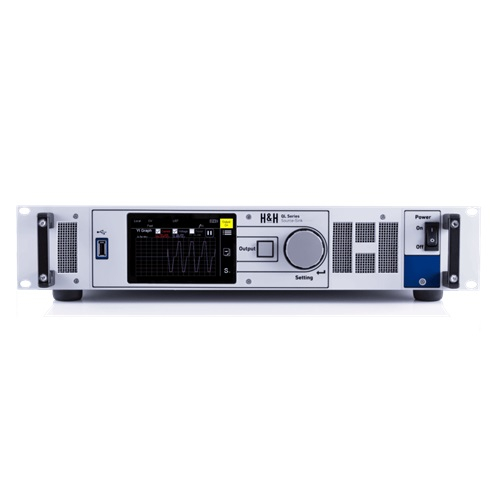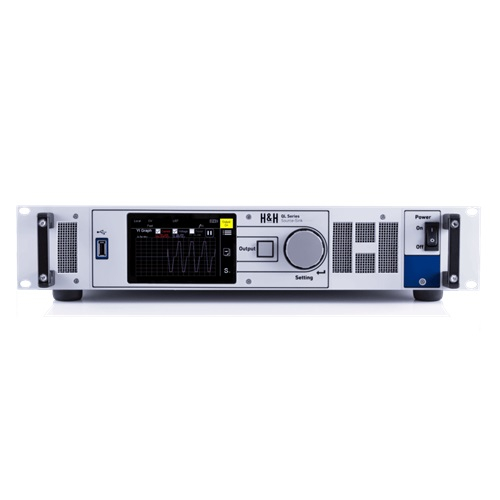Hoecherl-Hackl QL Series Bipolar/Unipolar Power Supplies (Four-Quadrant/Two-Quadrant)
The Höcherl & Hackl QL Series programmable four-quadrant power supplies (Bipolar source-sink) function as both a power source and a load, capable of operating in both positive and negative directions. These are widely used for testing various energy storage devices as well as other test objects such as batteries, motors, chargers, or electronic components (inductive and capacitive loads).
- Depending on the model, they offer up to 100 V or 320 A, with a maximum power of 3600 W.
- Available in two-quadrant or four-quadrant designs, the four-quadrant power supplies can also operate as AC power supplies, seamlessly switching between power source and electronic load.
- Fast rise/fall times as short as 120 µs, with a bandwidth of up to 3 kHz (model-dependent).
- Basic operating modes: CC (Constant Current), CV (Constant Voltage), CP (Constant Power), CR (Constant Resistance).
- Combination operating modes: CC+CV, CV+CC.
- Built-in DAQ (Data Acquisition) for synchronized data collection.
- Features rectangular waveform, PWM, and modulation functions.
- Supports capacitance simulation, internal resistance measurement, and trigger functions.
- Standard interfaces include RS-232, USB, LAN, CAN, I/O, and analog control; optional GPIB (standard SCPI support).
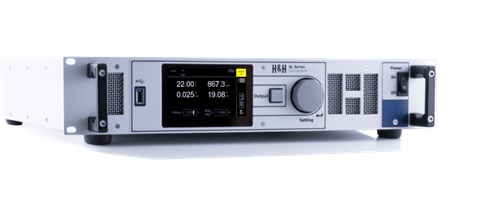
Quadrant II / Quadrant IV Power Output Direction
Quadrant II / Quadrant IV Power Output Direction
Programmable four-quadrant power supplies, when the output voltage is positive, allow two-quadrant operation where the power supply can either source current (provide power) or sink reverse current (absorb power). To ensure functionality close to 0 V settings and under longer connection wires, two-quadrant power supplies can operate at a negative voltage of -1 V. Four-quadrant power supplies can provide and absorb outputs of equal magnitude for both positive and negative values.
Switching Between Power Supply and Load
Based on the settings of parameters such as voltage, current, and power, once operation begins, the equipment will automatically determine whether it functions as a power supply or as a load.
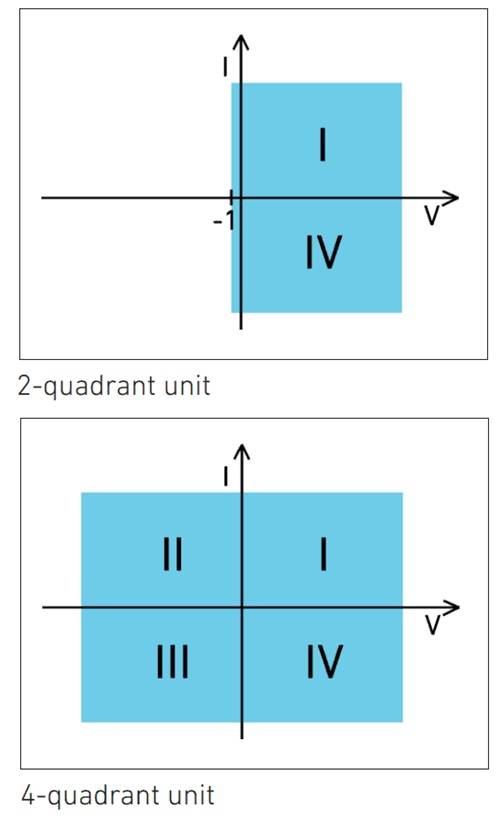
List, Square Wave, PWM, and Custom Modulation Functions
List Mode: In all operating modes—CC, CV, CR, and CP—you can use the list mode to generate load curves. Up to 300 time settings are supported. At the same time, voltage and current are synchronously measured, with data saved and timestamped.
Square Wave Function: Provides a convenient method to generate square waveforms by inputting absolute time and amplitude values.
Pulse Width Modulation: With the PWM function, you can manually configure switching frequency and duty cycle for two amplitude levels.
Custom Mode: Allows you to add sine, square, or triangle wave signals to the static settings in either CC or CV mode.
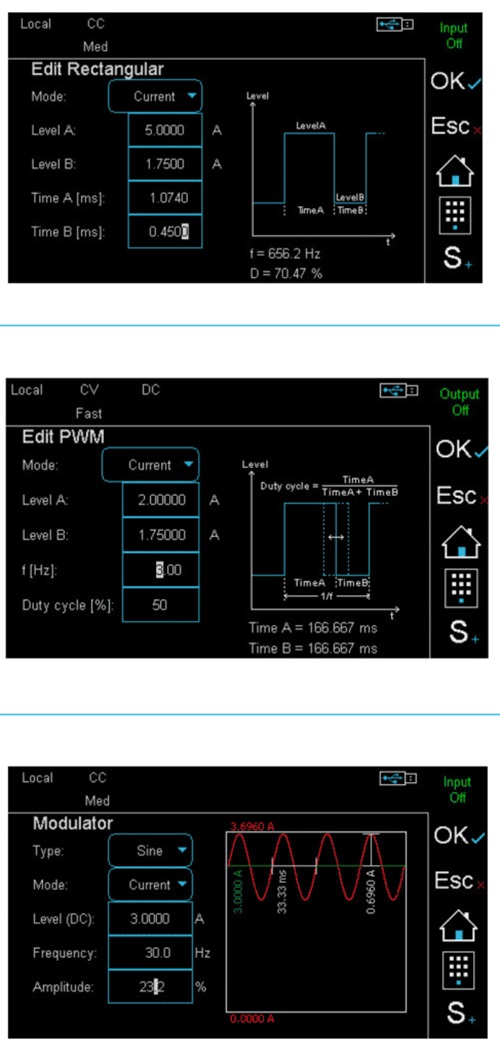
Energy Storage Discharge Testing
This applies to batteries, battery packs, supercapacitors, and electrolytic capacitors, utilizing CC (constant current), CP (constant power), or CR (constant resistance) discharge modes. The discharge function can be executed using a list mode, and pulse discharge methods are also viable. IUA discharge (CC + CV discharge) is supported as well: discharging at a constant rate until the current reaches a specified voltage, then maintaining that voltage until the defined minimum current is achieved. The stop criteria include charge, energy, time, current, or voltage. During data recording, a duration can be defined to observe the power charging phase.

Internal Resistance Measurement
The TRL series electronic load can measure the internal DC resistance of the connected device under test (DUT). The determination of internal resistance (Ri) is based on principles outlined in various battery and rechargeable battery standards, such as DIN EN 61951 and DIN EN 61960.
Every few seconds, the load measures the terminal voltage of the DUT (V1, V2) under two defined load levels (I1, I2) and calculates Ri accordingly.
With the press of a button, the load can store parameters and measurement results on a connected USB mass storage device, enabling fast and continuous production processes.
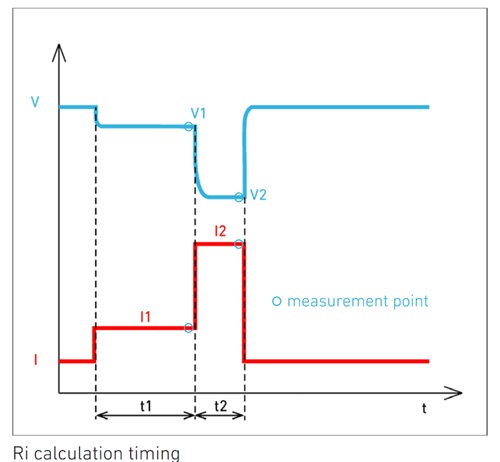
DAQ Data Recording
The programmable four-quadrant power supply can synchronize and store data such as voltage and current over time, while marking the data at defined intervals. The buffer can store up to 40,000 data records, which can be read through the data interface and also transferred to a USB flash drive. For storage intervals in the range of seconds, data can be directly saved to the USB flash drive as well.



